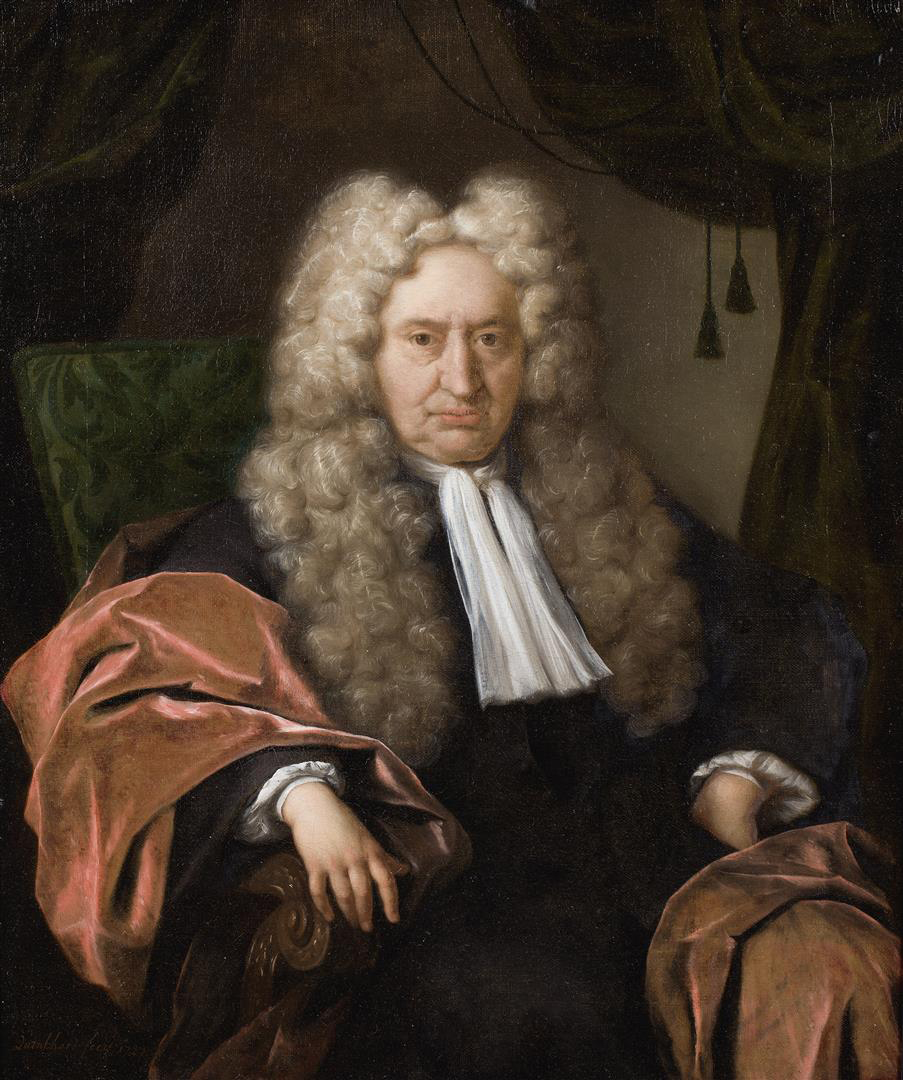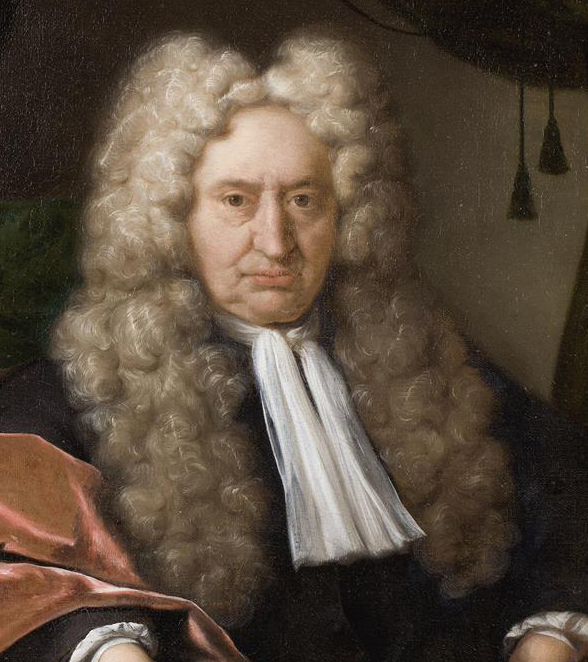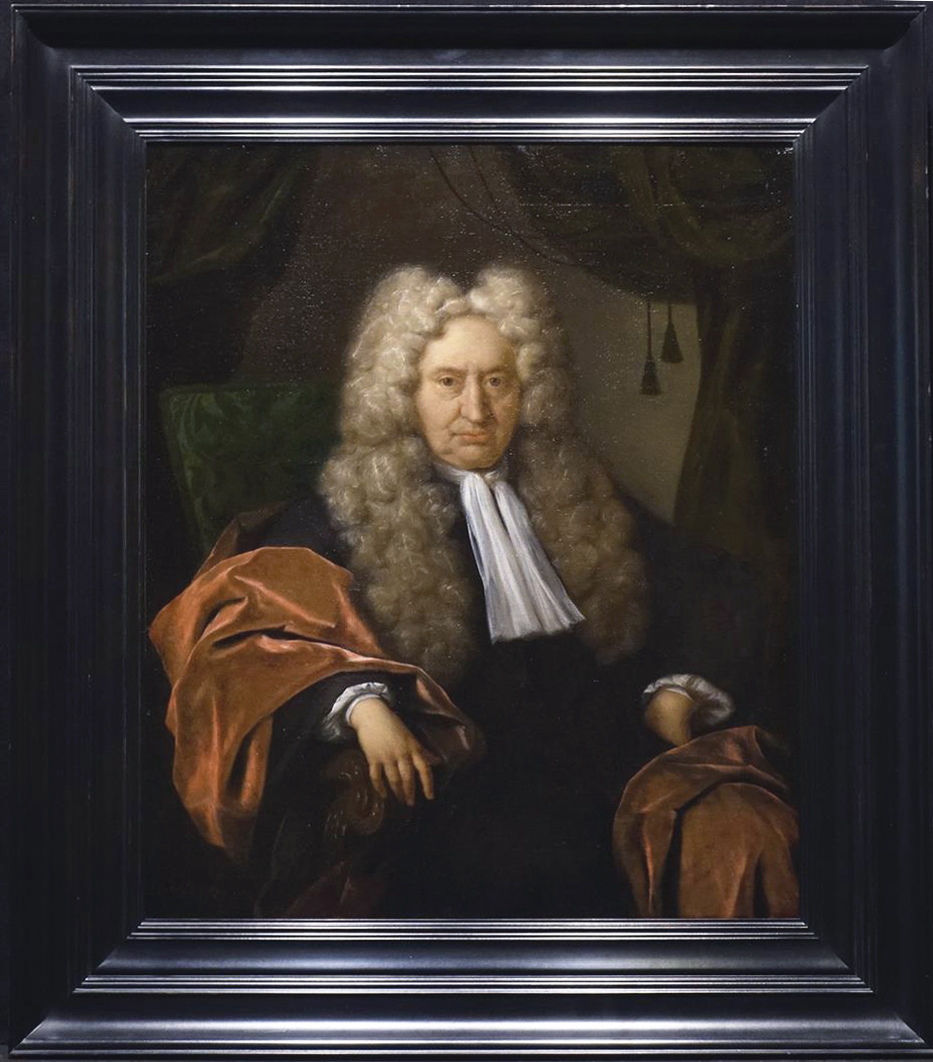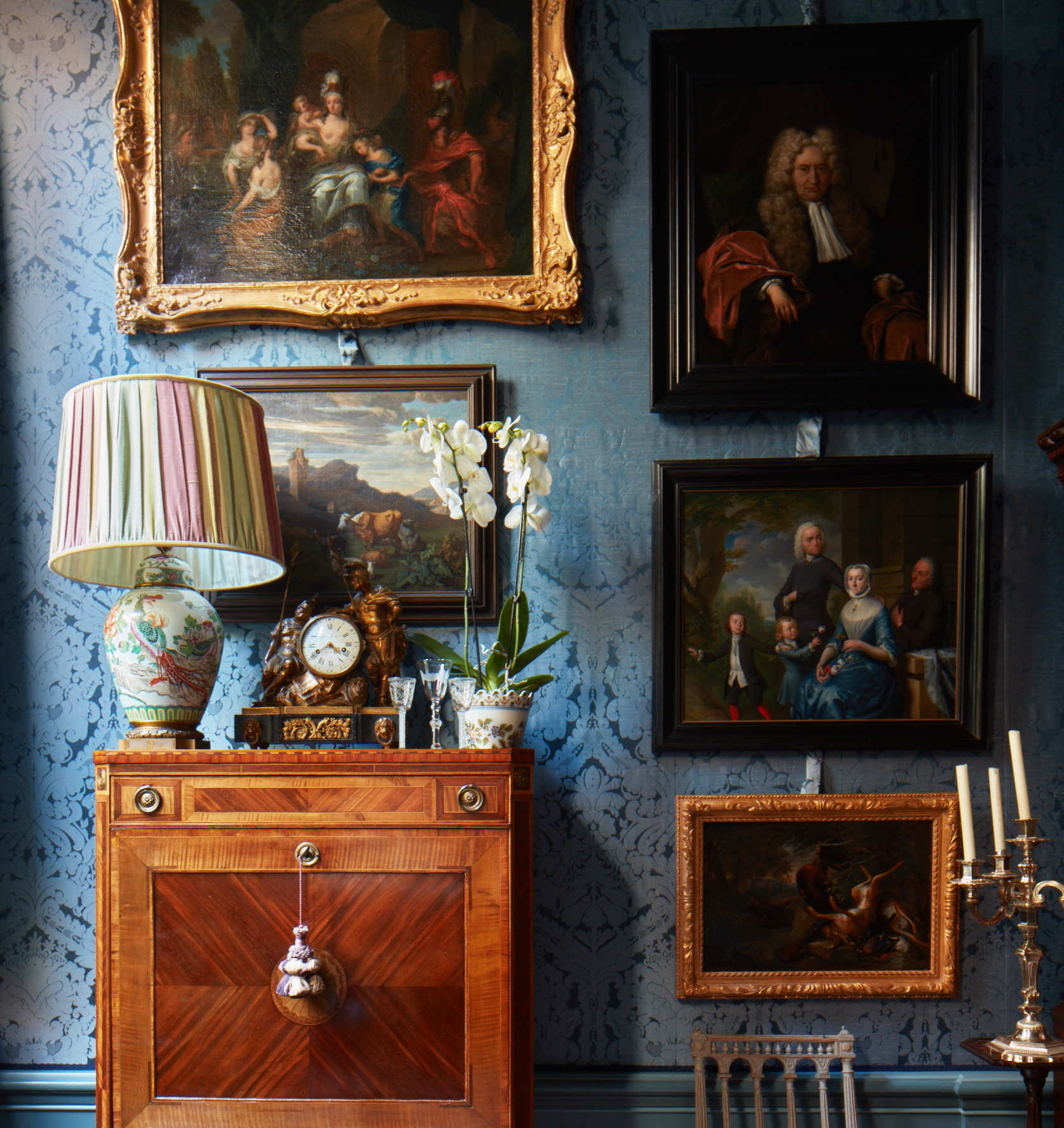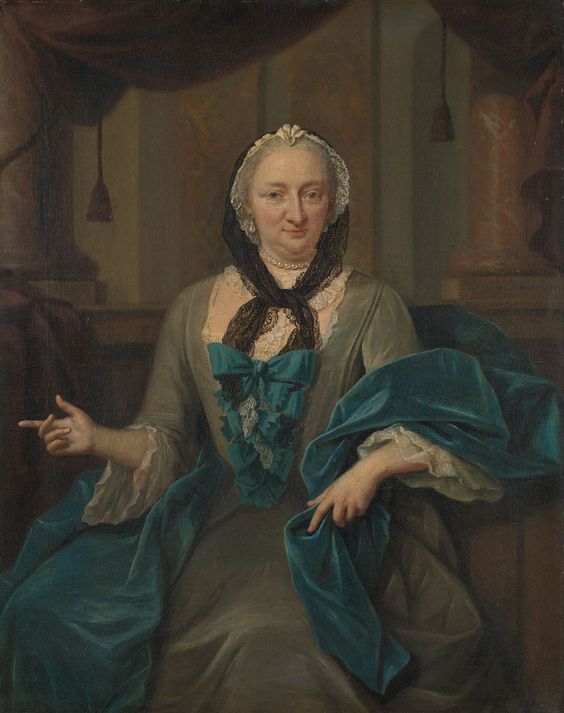JAN MAURITS QUINKHARD (Rees 1688 – 1772 Amsterdam)
Jan Maurits Quinkhard (Rees 1688 – 1772 Amsterdam)
Portrait of a Gentleman
Oil on canvas, 63.3 x 53.2 cm (24.9 x 20.9 inch); contained in a dark stained frame of historic model
Signed and dated ‘Quinkhard fecit 1727’ (lower left)
Provenance
Anonymous sale, Christie’s, Amsterdam, 9 November 2010, lot 91; private collection, The Netherlands
***
The identity of the sitter of the present portrait is no longer known, but we can be certain that he was not like one of those people from our current age who rejoice in their own photographed likenesses, or take endless selfies to obtain the right angle. Let’s face it: what we see at first sight is what seems to be a rather grumpy old man, who is not particularly enjoying his session with the painter. You can almost hear his spouse, “it has been arranged with the painter, you have to and you will!”.
Studying the present portrait, we do not see beauty, but we see character, we do not see a person who is still full of dreams and aspirations, but one who has come to know the world and its harsh realities. We see eye to eye with a person who was painted nearly three hundred years ago and who has long left this world, leaving only this painted likeness behind, and probably a few unknown letters or archival references. He has been grumpily hanging on walls for centuries, and we are honoured that he is currently guarding over the daily proceedings in our dining room, and having spent many dinner parties together, we can say that he is a more than welcome guest, not very talkative, but charming nonetheless.
Certainly, the present picture will probably not elicit immediate expressions of delight from your dinner guests, as it is not the usual suave portrait one finds at international art fairs, depicting pleasantly-smiling young beauties. We however have great admiration for such un-idealised depictions. The fact that the sitter could have easily asked to be painted in a more flattering manner, but instead was happy to pay the artist for the current pose and expression, is to us endlessly fascinating. This tells you so much about the sitter and can lead to endless speculation about his character. This is, as long as the identity is unknown, no more than mere speculation, but one has the distinct feeling that although he may have had many positive or negative character traits, “boring” was not among them, and isn’t that a great credit. Portraits such as the present ask a little effort from their owners and viewers to be appreciated, but are endlessly rewarding, for those who “get it”.
In addition, such portraits are often extremely interesting and enormously good value for money. Those who can look beyond the wrinkly outward appearance and look at the handling of the brush, will be able to see that it is a first-rate portrait. Our sitter is likely to have belonged to Amsterdam’s elite. Shown wearing an elaborate wig, the realistically depicted man is seated in a richly carved armchair, upholstered in a green patterned velvet. The undulating red silk shawl would not have been worn in reality, but is an elaboration by the painter to provide pictorial interest, as are the curtains and hanging tassels. In many way the sitter has his own stage around him, carefully constructed by the artist.
The portrait is proudly signed and dated by Jan Maurits Quinkhard, who was born in Rees, near Cleves, the son of the painter Julius Quinkhard I, who was also his first teacher.1 By 1710 he was living and working in Amsterdam, where he was taught by Christoffel Lubieniecki (1659–1729), Nicolaas Verkolje (1673–1746) and Arnold Boonen (1669–1729), all leading artists of the period. In addition to producing paintings, drawings, miniatures and designs for prints and engravings, he restored paintings and dealt in art.
Among Quinkhard’s most celebrated works are the more than hundred miniature portraits of poets, known as the Panpoëticon Batavum, the brainchild of Arnold van Halen (1673–1732), who also supplied many of the portraits himself.2 Many of the portraits from the Panpoëticon are now in the Rijksmuseum. Quinkhard was of the founding members of the Amsterdam Stadstekenacademie, or drawing academy. Among his pupils were many important artists of the period, including his son Julius Henricus Quinkhard, Jurriaan Andriessen, Jan de Beijer, Tibout Regters and Jan Stolker. Quinkhard was one of the leading portrait painters in Amsterdam of the day, and portraits by him can today be found in several museums, including the Rijksmuseum and the Amsterdam Museum in Amsterdam and the Centraal Museum in Utrecht. The present portrait can for instance be compared to Quinkhard’s portrait of Margaretha Trip, preserved in the Rijksmuseum in Amsterdam (fig.).3
Because many of his portraits are in museums and institutions, his paintings do not frequently appear on the art market. As mentioned before, portraits such as these are not everyone’s cup of tea, but for those with a keen eye and an acute sense of history, they will be a daily joy to look at, realising how special it is to own a piece of history and art!
SOLD
1. For the artist, see P. Knolle, ‘Duitse schilders in de Hollandsche school. Hun komst, verblijf en reputatie 1680-1820’, De achttiende eeuw 40 (2008), no. 1, pp. 31-49 and Jane Turner (ed.), The Dictionary of Art, London 1996, vol. XXV, pp. 822-23.
2. For the series, see Lieke van Deinsen, The Panpoëticon Batavum: the portrait of the author as a celebrity, Amsterdam 2016.
3. Oil on canvas, 50 x 39.5 cm, signed and dated ‘J.M. Qinkhard pinxit 1754’, inv. no. SK-A-1269; Reinier J. Baarsen, Dirk Jan Biemond, Robert-Jan A. te Rijdt, Frits Scholten, Nederlandse kunst in het Rijksmuseum 1700-1800, Zwolle/Amsterdam 2006, pp. 234-235, fig. 43.
